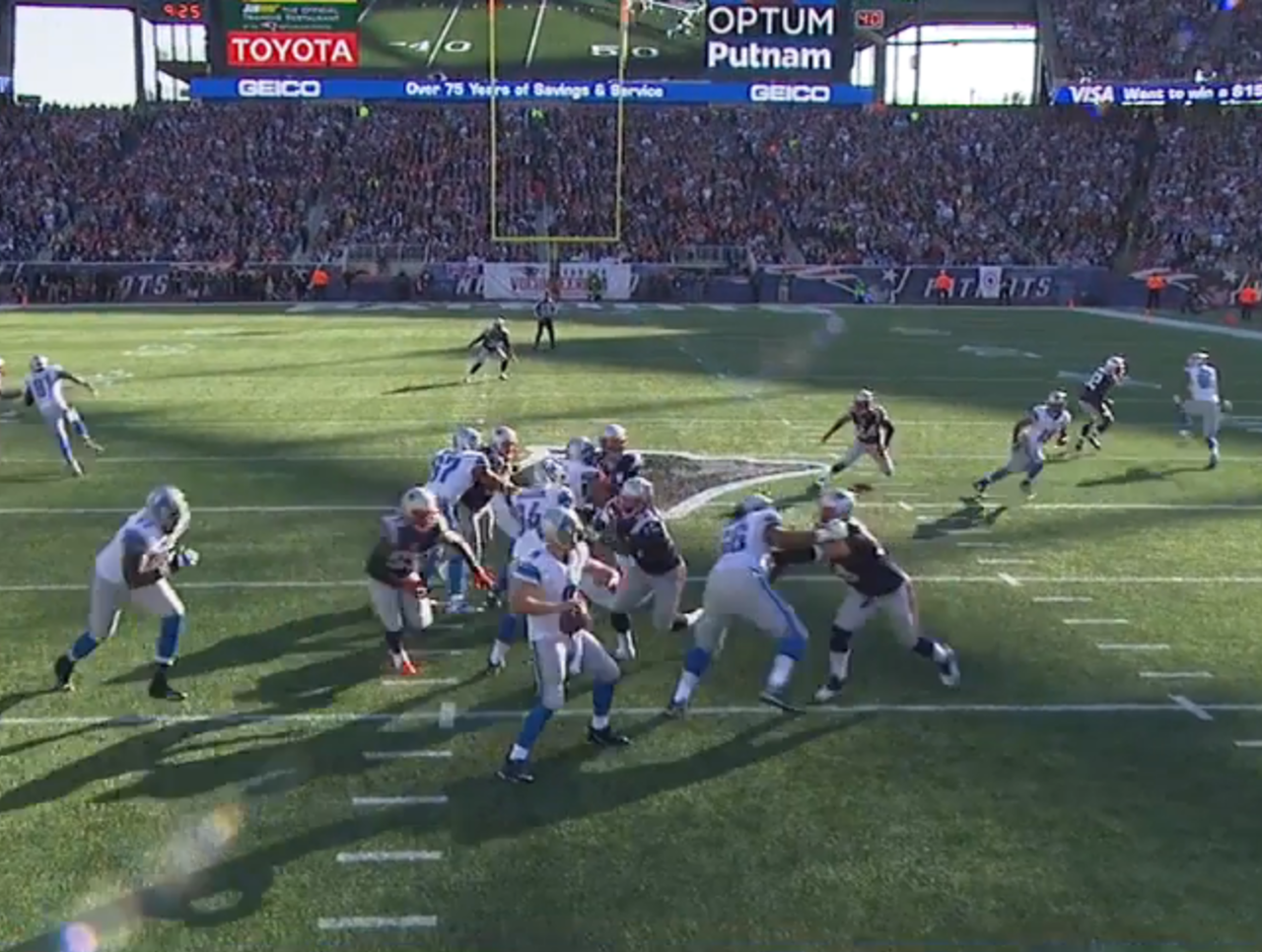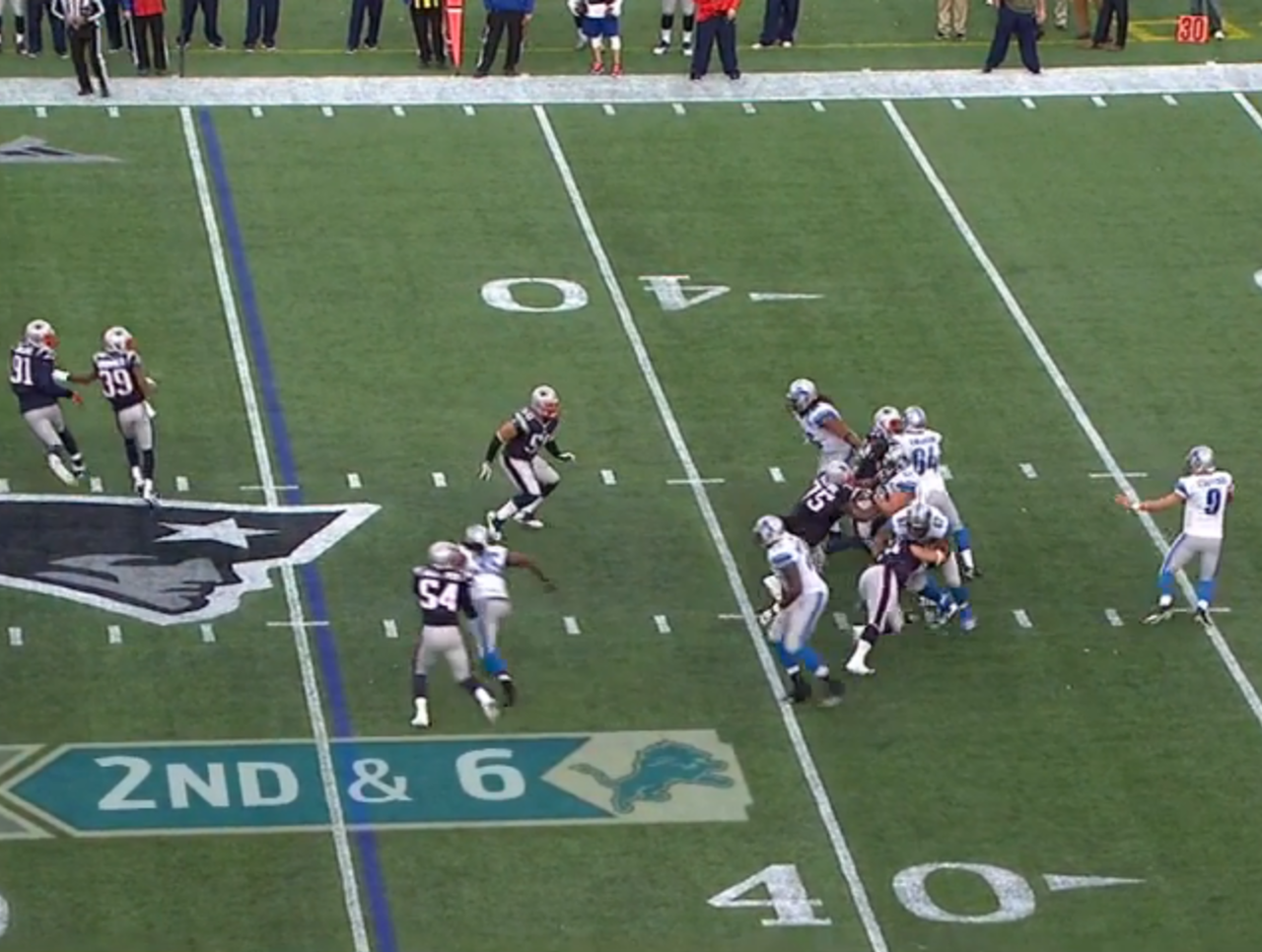Film Room: Lions' offensive line struggles are affecting Matthew Stafford
Going into Week 12, the Detroit Lions' main concern was scoring. A week earlier, two field goals against the Arizona Cardinals had stopped them from being shutout. The offense was sloppy. Players were frustrated, and it showed in their body language.
Offensive coordinator Joe Lombardi had to figure something out.
He chose to cut back up to 20 percent of the plays in an effort to help his players think less and play faster on simpler assignments. Simpler assignments, once practiced, should provide smoother plays.
The Lions' offense, as a whole, has lagged half the season. Detroit scored less than 20 points in six of its games. Receivers have dropped passes, tight ends have ran cluelessly, offensive linemen have blown blocks and, worst of all, quarterback Matthew Stafford's performance has been unpredictable.
Stafford has always symbolized the Lions’ inconsistencies. He’s thrown the third-most interceptions this season with 10 and is 26th with a quarterback rating of 81.
Against the New England Patriots on Sunday, routine throws were difficult for Stafford. His footwork was slow and choppy. His arm placement varied. He occasionally did not make a throw when he should have, and vice versa.
In the first quarter, Stafford took a quick five-step drop and looked right. Two receivers ran downfield against man coverage. They corralled the corners and opened up room underneath, between the hash and numbers, where third receiver Golden Tate ran a pivot route.
Tate cut inside, bounced off a cornerback and cut outside. He ran across the 50-yard line open.

Meanwhile, the pocket collapsed from all angles. Defensive ends and linebackers poured in. Stafford needed to get the ball out in a hurry. He raised his right arm, the ball gripped tight in hand and … put it back down.
A Patriots linebacker burst in and drummed Stafford’s non-throwing shoulder into the ground for the defense’s first sack.
Stafford had been looking for a big play downfield, hoping to jump-start the struggling offense. It’s something he often tries, but lately it has led to interceptions. He’s thrown at least one in five straight games.
It also stalls the offense on later downs. It forces longer plays on second down, and when those don’t work, it becomes a distant third down. The offense, per Team Rankings, faces the third-most third downs per game, 14.6, of which they convert 39 percent, 21st in the league.
Later in the game, in the fourth quarter, Stafford tried again. On first down he took a five-step drop and scanned downfield with unsettled feet. An open receiver crossed underneath from left to right. Out of the backfield a running back leaked to the left flat.
The Patriots focused on the deep threats and played soft zone coverage underneath. An outside linebacker and defensive tackle rattled the pocket and forced Stafford to flush left.

As he shuffled, he kept his eyes up and both hands on the ball. He stared downfield and waited for an opening. There was no one available. He waited, hoping that someone would come open deep despite the running back free in the flat.
A defensive tackle jumped, hands and legs outstretched, to block Stafford’s vision. Stafford pulled the ball back down after considering a throw. An outside linebacker chased and wrapped his long arms around Stafford’s waist. He pushed Stafford, who, as he fell, side-armed the ball to the running back in the flat. It bounced at the line of scrimmage and bounced again, this time into the running back’s gut before it was ruled incomplete.
As the game progressed, the Lions' offense regressed. They failed to move the ball toward the end zone and their problems persisted. Linemen blew blocks, receivers dropped passes and tight ends ran wrong routes.
Two plays after the incomplete pass to his running back, Stafford took a five-step drop behind a firm pocket. He looked left, searching for a teammate to pass to, while a Patriots nose tackle bullied the center up the middle of the pocket. The center soon anchored and quelled the rush.
As Stafford continued to look left, another pass rusher, this time a defensive end, rattled the cage with pressure up the B-gap, where the left guard blocked. Then the end fell on his knees and was quieted.

Stafford drifted away from the pocket, to his right, where he scrambled as the ball swung in his right hand. As he ran, he invited pressure from an outside linebacker and defensive end, severing his options. His top two receivers to that side were blanketed. He had only two options: he could throw the ball away or throw to the running back in the flat.
A linebacker closed in on Stafford. As Stafford was planted in the grass, he threw over the linebacker’s head, toward the running back. The ball bounced a couple yards in front of the running back, then past him, again incomplete.
By the game’s end, Stafford completed 39 percent of his passes, was sacked twice and threw an interception.
The offense scored nine points. Once again, they were held without a touchdown. For the third time this season, they scored less than 10 points despite having some of the best offensive weapons in the NFL.
The problems go beyond the playbook. The offense learned the simple mistakes on plays during the first few days of camp - now the main problem is focus. Players aren't doing their jobs on every play, and that’s made Stafford's work much more difficult.
Stafford has had his struggles, but when his teammates don’t pull their weight, he puts it on himself to make big plays. This sets the offense back further. He’s not consistent enough to shoulder the offense and, as a result, he makes mistakes under pressure.